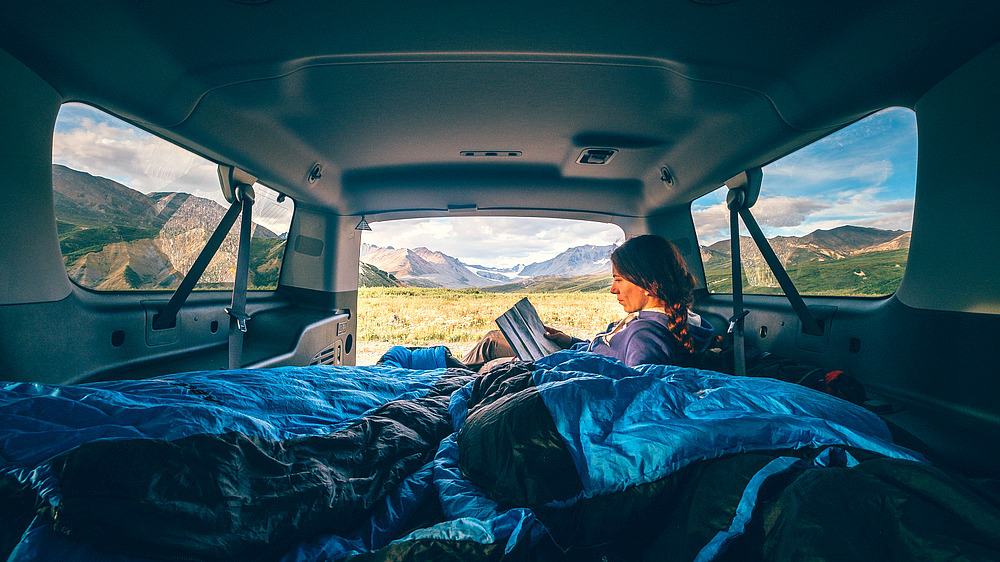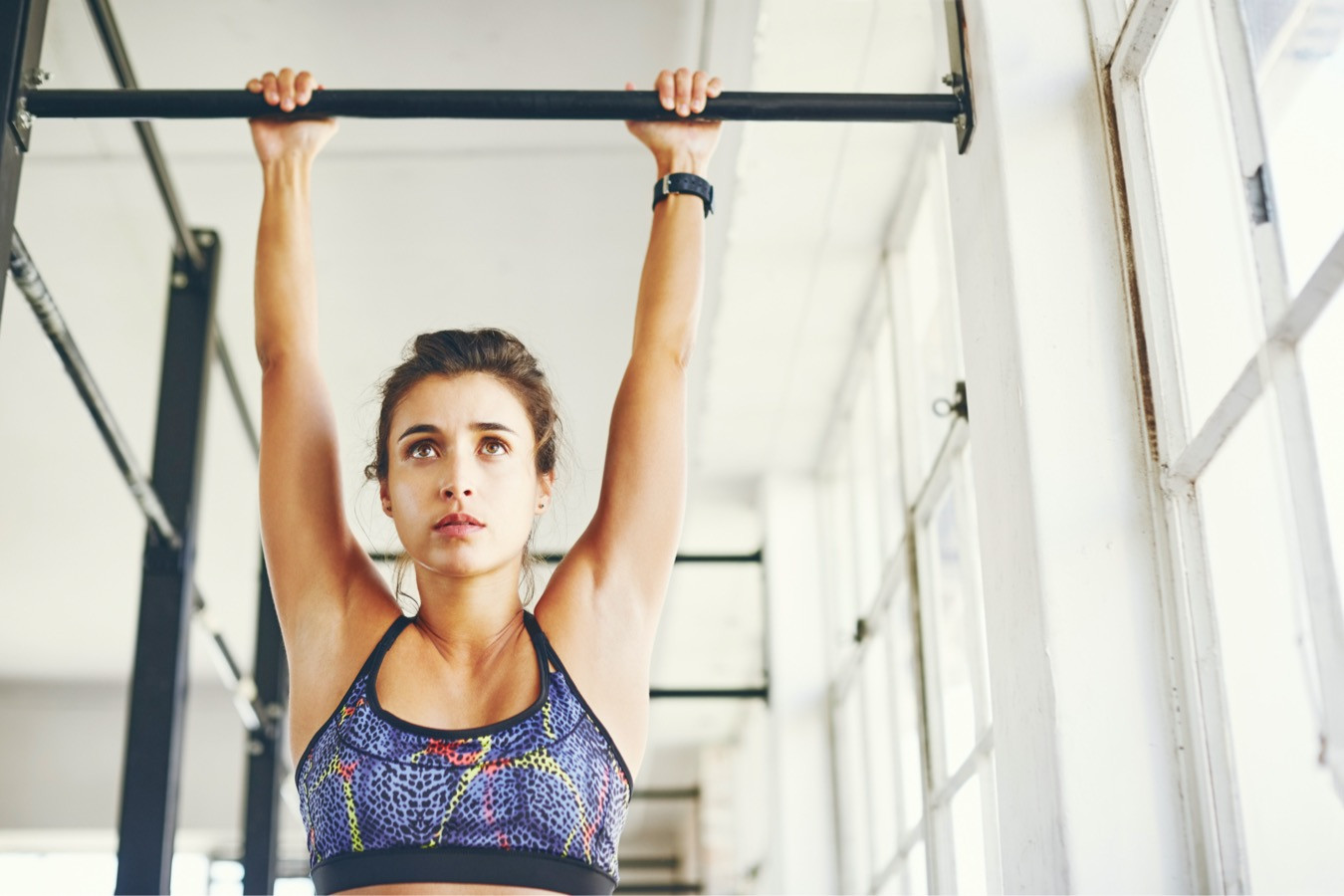
Mobility is a difficult subject. This is not only due to the complicated physiological relationships, which sometimes have not even been properly deciphered, but also to the unbelievably large number of exercises available, which makes it very difficult to keep an overview here.
I don’t know how many hundreds of mobility exercises I have already seen. But one thing has emerged over time: Most mobility exercises are unnecessary or only useful if you have very, very specific restrictions.
This leads deep into the field of work of a physiotherapist and is therefore superfluous for a normal leisure athlete. However, there are also a few exercises that surpass all others and on a daily basis a real enrichment for mobility and care of the body are.
Hanging is one such exercise. I would – without any exaggeration! – Go so far as to say that Hanging is the world’s best mobility exercise .
I am absolutely serious: There is no other mobility exercise with as many and significant benefits for maintaining the musculoskeletal system.

In this article you will find out why everyone (!) should hang every day, what this does in your body and how you can get started with the hanging challenge right away.
You may have already learned about why hanging is such an important exercise when you were introduced to bodyweight training. There it became known as a key exercise for stable and healthy shoulders and thus as a key factor for effective and sustainable body weight training.
But the advantages go far beyond that. In fact, hanging is a great exercise for everyone – whether you do calisthenics, use dumbbells, or don’t exercise at all. For athletes as well as non-athletes, for physically hard-working people as well as for office workers.
I will tell you in all honesty: I dream of a future in which every workplace is equipped with appropriate gymnastic rings or bars that allow regular hanging. Because that would be a gigantic advance in terms of health prevention, the care of our musculoskeletal system and the prevention and treatment of tension and blockages.
These are some of the benefits of daily hanging:
- Correction of a shoulder joint misalignment
- Relief of tension and blockages in the spine
- Care of the intervertebral discs and prevention of herniated discs
- Strengthening of the hands and grip strength
Let’s go through these benefits in order before we take the hanging challenge so that you are immediately motivated to get started.
Benefit # 1: Correction of a shoulder joint misalignment
One-sided stress leads to adaptive adjustments within the musculoskeletal system. Nowadays, this particularly often affects the shoulder, which is strongly shifted forward in many people due to excessive office work (without appropriate compensation). Incidentally, this can also be done through excessive training of pressing movements (e.g. bench press ) happen.
Among other things, this can lead to overextension of the rotators and shortening of the chest muscles as well as adaptive adjustments in the joint capsule.
The capsule consists of ligaments and offers the shoulder joint, which can move freely in it, the necessary stability and protection against overstretching. It can harden and shorten locally, which displaces the joint.
A joint misalignment brings all surrounding structures out of balance, leads to incorrect and overloading of individual muscles and thus, for example, to tension. It is a very common cause of such restrictions, which is why Kelly Starrett in “Become a lithe leopard” wrote:
“Experience has shown that many problems (restrictions in the soft tissue and functional glide tissue disorders) automatically disappear when I can correct the joint position.”
A technique often used by physiotherapists for this is what is known as distraction .

The structures involved are pulled apart by an external force so that the joint can align itself better again. For example, an exercise band can be used for this, which is held and tensioned with an outstretched arm. The band now tries to pull the arm away from the body, which increases the distance between the joint bodies and corrects the position of the shoulder joint.
The same thing happens through gravity when hanging. It elongates the body and thus helps to loosen hardening and improve the position of the shoulder joint.
This effect is noticeable by the way. Experience has shown that in the beginning it is often the case with passive slope (“unhooking”) that there is only a very slight stretch. The structures involved in the shoulder are tense and hardened, so that you are hardly noticeably drawn out. Over time, however, the stretching gets stronger and you can let yourself hang lower and lower.
The joint positioning can also be improved by the active slope, which strengthens the connection to the shoulder blade (more on this later).
Benefit # 2: releasing tension and blockages in the spine
Here, too, a slight joint misalignment is often at work. Individual vertebral bodies are minimally removed from their original place due to incorrect loading and this leads to movement restrictions (blockages) and tension in the surrounding muscles.
Massages, for example, only help to a limited extent if the cause is not eliminated. By hanging the spine is elongated and can realign itself again. Blockages are released (sometimes also audible, by the way) and the surrounding muscles can relax.
Muscle imbalances – cause of blockages
In addition to joint misalignments, imbalances in the muscles are a frequent cause of tension and blockages.
This quickly creates a vicious cycle, because tension favors blockages and blockages in turn foster tension.
Hanging can help to correct joint misalignments – but not to eliminate major imbalances in the muscles (apart from a poor shoulder blade connection).
For this, a more balanced load is necessary. In particular, it is important to train more frequent pulling movements such as pull-ups or to do endurance sports such as rowing & stand up paddling in order to balance the body bring.
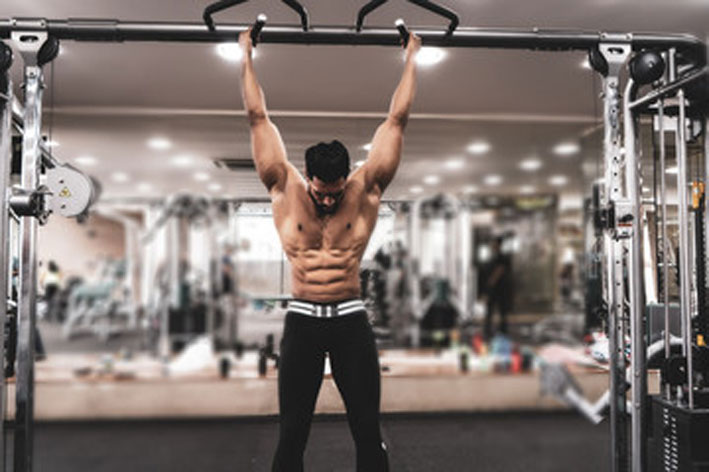
Benefit # 3: Care of the intervertebral discs and prevention of herniated discs
When we talk about the health of the spine speak, of course we also have to include the intervertebral discs. These important buffers between the vertebral bodies, which give our spine great potential for movement (especially for rotational movements) and at the same time act as shock absorbers (stabilize), can cause major problems with increasing wear – the herniated disc says hello.
Most people are now familiar with what happens when the intervertebral discs wear: The intervertebral discs lose fluid and thus also their height – they dry out, so to speak. As a result, they gradually lose their buffer function and the spine becomes less stable. It can and will not only lead to pain, but also to further signs of wear (e.g. in the adjacent vertebral bodies)
This can have various causes. Above all a lack of exercise, obesity, poor nutrition (especially insufficient fluid intake) in combination with age-related wear lead to wear and tear on the intervertebral discs.
One-sided stress and overload can also lead to the so-called herniated disc , in which the gelatinous core (the buffer in the center, a kind of gel cushion) of the intervertebral disc breaks through its outer fiber ring (its harder shell) and then gets on my nerves.
The wear and tear of the intervertebral disc usually begins at a young age, when we become more and more physically inactive and thus often gain weight. To understand it more precisely, we have to look at how the intervertebral discs be fed.
Excursus: nutrition of the intervertebral discs
In contrast to the muscles, the intervertebral discs have no connection to the bloodstream – or only a very small connection in the outermost areas. You will not be supplied with the blood (nutrient flow) by our central pump (heart).
Instead, they are primarily supplied by diffusion of surrounding fluid. The nutrient exchange is based on stress and relief.
By relief the intervertebral disc absorbs the surrounding fluid like a sponge and receives new nutrients.
Through stress it releases “used” fluid again.
The intervertebral disc thus nourishes itself through the interplay of stress and relief. During the day she loses fluid and also height. Incidentally, this reduces the body size measurably over the course of the day by up to 2.5 cm.
The spine and thus the intervertebral discs, for example, find relief when lying down.
The intervertebral discs experience stress in different ways. There are balanced, rhythmic loads such as when walking. These are very important for the exchange of nutrients in the intervertebral disc. But there are also harmful, permanently one-sided loads such as when sitting.
The latter is our problem: The intervertebral discs of most people nowadays are exposed to very one-sided permanent loads. In fact, the load on the intervertebral discs is even greater when sitting than when walking.
This effect is supported by asymmetrical postures that are often assumed when sitting for long periods. This creates lever arms that increase the effect of gravity and thus the load on the intervertebral discs.
The solution to the problem is obvious: Reduce one-sided loads / postures, ensure more movement – and hang out daily.
Hanging supports disc care and prevention of a herniated disc because the effect of gravity is reversed. As already mentioned, the spine is elongated. The intervertebral discs are relieved and can absorb new nutrients.

Benefit # 4: Strengthening the hands and grip strength
In addition to the spine and shoulder, hanging has positive effects on all the structures involved, especially the hands.
A firm, strong grip is important for pretty much every exercise and everyday physical strain. Whether you are dragging furniture, lifting dumbbells or doing pull-ups when moving, power is transmitted via the hands. They are an important link and the first point of contact for power leaks within the kinetic chain.
Nowadays you see more and more effeminate hands. They are smooth, soft, extremely prone to cracking, and unable to move heavy loads. The lack of progressive resistance and physical exertion weakens hands and often the character.
Hanging provides the diagnosis and also the cure. In the early stages of the challenge, you will likely be in pain because your hands are not used to being stressed so often and so heavily.
But if you bite through and hang on, the body adapts. It strengthens the grip and also the skin. It becomes rougher, harder, more tear-resistant and stronger.
From experience I can tell you that the pain in the hands will go away after about a week. Of course, strength training also benefits from this – you can do more pull-ups and lift heavier weights.
The anatomy of hanging
Before we get to the challenge, I would like to draw your attention to a small, inconspicuous and yet readable booklet that illuminates the anatomical relationships of hanging in more detail.
Dr. Kirsch is a surgeon who has been conducting research into the function and healing of the shoulders for many years and has found hanging to be one of the key elements for healthy shoulders.
In “SHOULDER PAIN? The Solution & Prevention ”he explains the anatomical relationships and, among other things, with the help of CT scans, how hanging affects various functional restrictions of the shoulder.
The book is very short and read quickly. The decisive practical insight: Build hanging into your everyday life. It is therefore particularly recommended for those who are interested in a more detailed illumination of the underlying anatomy.
You have now got to know some of the reasons why hanging is so important for the body and the maintenance of the musculoskeletal system. See it as a little introduction, because there is much more to this than theories and initial research results not yet – the influence of movements and postures on the structures of the musculoskeletal system is far from being fully explored.
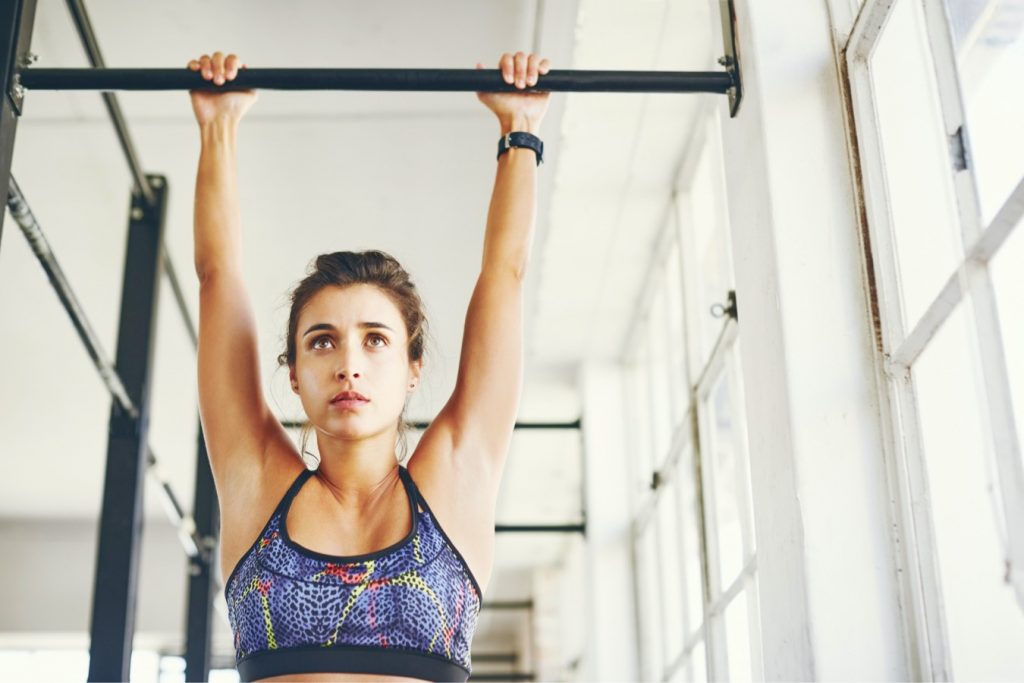
What we do know though: hanging helps. Hang heals. Hanging strengthens.
At least that’s what everyone knows who has faced the Hanging Challenge, which was first published by Ido Portal. So there is no need to believe the theories. Try it out and prove it yourself!
Make hanging part of your everyday life for the next 30 days and hang for at least 7 minutes a day!
The hanging challenge is used to complete this elementary exercise as part of a daily to integrate exercise and body care routine. The long-term goal is to hang permanently every day for a total of 7 minutes – after the challenge, of course, intuitively (i.e. approximately) and not after a time clock.
Important: The hanging challenge is not a training, it is really about a form of everyday “movement”. It should become part of everyday life and therefore as best you can be scattered over everyday life.
It therefore makes no sense to go straight through the hanging time in the morning. We want to relieve the spine every now and then and let the intervertebral discs “breathe deeply”.
Nevertheless, every time you hang on to the bar (or rings), you should hold on for at least 30 seconds at a time, to get a nice stretch and give the intervertebral discs the opportunity to supply yourself with new nutrients.
Practical tip
It is probably not possible for you in everyday work to spread the hanging evenly over the day, because most workplaces STILL offer no possibility for it.
Nevertheless, you can implement the basic principle, namely to distribute the hanging as much as possible over the day. Distribute it as best you can over the available time windows (usually morning and evening).
To do that, you absolutely need a hanging facility at home. Either a pull-up bar or gymnastic rings. Create this opportunity for yourself! I know it is not always easy and there may be this or that excuse. But this is not about ordinary training equipment that is optional. For your body, hanging is much more like brushing your teeth – elementary and without alternative to caring for it.
The start
For beginners with no or little sporting background, 30 seconds of free slope is usually too difficult. Some people only manage 10 seconds. However, this is not a problem at all, because with a small twist you can reduce the proportion of your effective body weight.
To do this, place your feet lightly on the floor (or on a raised surface, a box, bench or drinks crate) and thereby create a counterforce. So you can easily control the level of difficulty and, even as a beginner, hold out the 30 seconds.
In the beginning, it can also be advisable for advanced learners to use this trick in order to get started easily. This is useful if you have done very little for mobility, have a lot of blockages and tension in the spine and / or poor stability in the shoulder.
Otherwise it can lead to more severe stretching pain in the shoulder area and due to the blocked spine it can in individual cases be a little black before your eyes.
That is no reason not to hang, however. Quite the opposite: It speaks in favor of hanging out daily to solve these problems. However, slowly and at first calmly using a counterforce.

Active vs. passive slope
There are two basic variants of hanging: The active and the passive slope.
The benefits mentioned are tailored to the passive slope and that is also the exercise variant that you should concentrate on in the long term:
Make sure you only use as much force as you need to hold on to the bar. Let gravity pull you out and relax. Breathe calmly and evenly.
For a change, however, you can always integrate the active slope, which above all strengthens the important shoulder blade connection:
There will be a separate article on the shoulder blade connection , but I can anticipate that it is a very important stability criterion for the shoulder (to anchor it in the intended place ) and at the same time is crucial for transferring forces in the shoulder. Among other things, it is an often overlooked factor, to do (many) pull-ups and of course to prevent shoulder injuries.
In order to first stabilize the shoulder when it is shifted from its original position (mostly forwards), it is even advisable to concentrate more on the active slope at the beginning. The strengthened shoulder blade connection helps in the process of centering the shoulder in its original position.
You can use both variants and, depending on the starting point, concentrate more on one. If you have pain on the passive slope (except in the hand), then concentrate first on the active slope and only practice the passive slope with the help of the counterforce trick.
After long years of physical deprivation, I have observed that society is gradually changing. Many people focus more on the physical and increasingly understand how important it is to care for the body, promote fitness and take preventive action, instead of exploiting the body, restricting the musculoskeletal system wear out and then just treat the symptoms.

That is a step in the right direction and even if this development is still in its infancy, the increasing interest of many people, who also approach me, makes me very positive that there will soon be some improvements in sociopolitical terms and in the employing industry.
At least more and more employers are recognizing the value of physical fitness and health, so that in recent years (previously mainly in larger companies) more opportunities and support programs for physical compensation have been created.
In order for this development to continue and accelerate, each and every one of us is asked to set a good example.
Share the challenge and also the article from Ido Portal about hanging. Look for opportunities to do your daily hanging workload. Ask your employer and, if necessary, do some persuasion – because ultimately it’s a win-win situation. The healthier and fitter the employee, the more productive they are. Conversely, back pain, for example, inhibits performance, productivity and motivation.
Don’t be afraid to practice hanging in public, if you can find appropriate opportunities (e.g. in the tram). Of course you will be looked at strangely, I can confirm that from experience. Because STILL it is unusual. But the more people tread this path and can share their positive experiences with questions (and there will definitely be), the more people participate and the greater the acceptance. And everyone benefits.

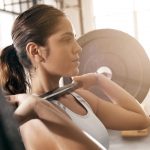 Muscle Gain Or Fat Loss – Which Comes First?
Muscle Gain Or Fat Loss – Which Comes First? 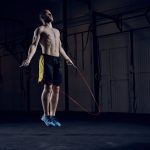 Phenomenon ‘Mental Codes’ – You have to know this secret fitness mechanism
Phenomenon ‘Mental Codes’ – You have to know this secret fitness mechanism 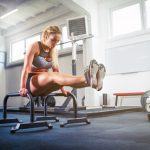 Training with your own body weight: How to get in top form without a gym
Training with your own body weight: How to get in top form without a gym  Daily Discipline – Stop Chasing After And Do What Needs To Be Done!
Daily Discipline – Stop Chasing After And Do What Needs To Be Done! 
